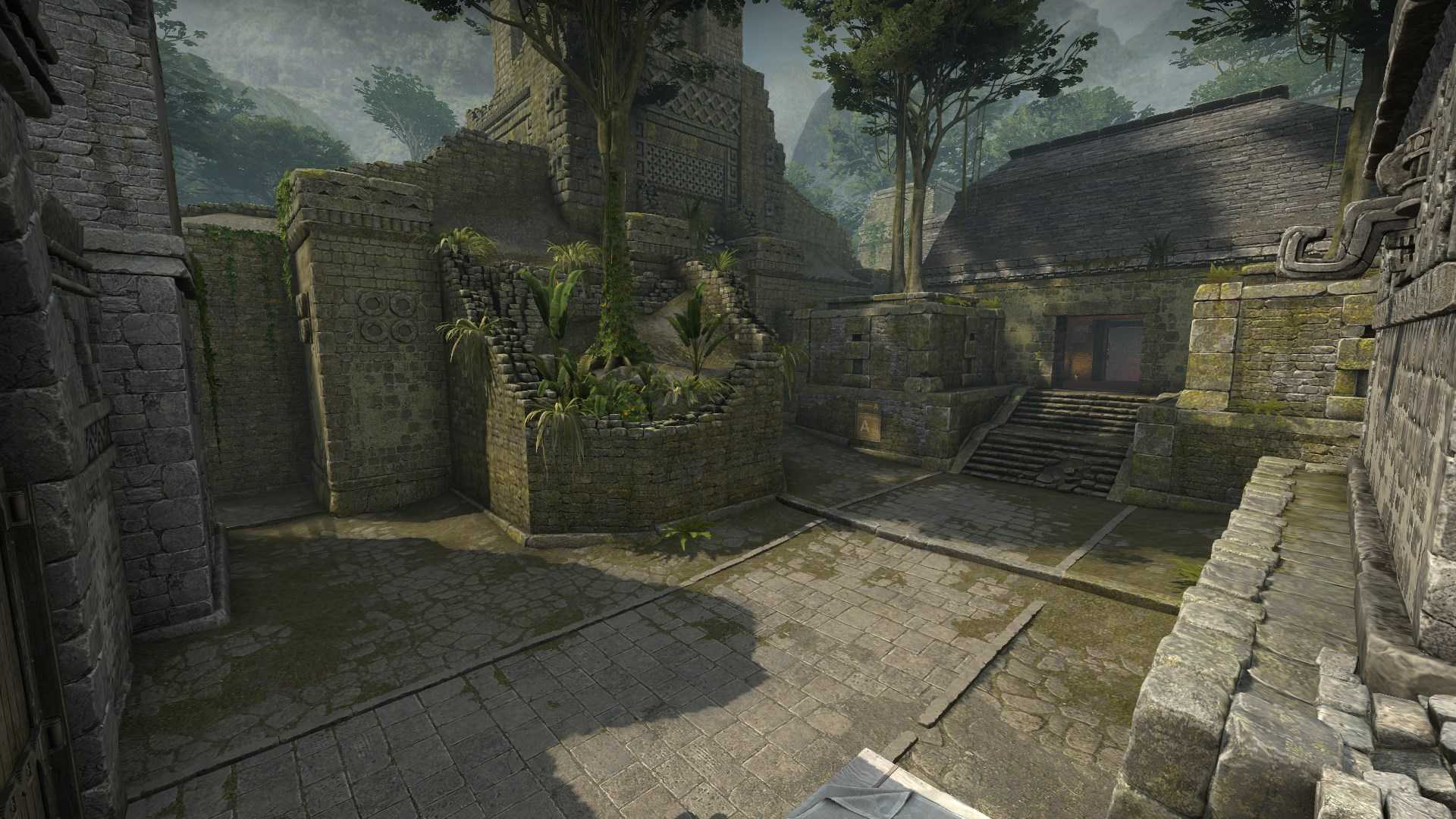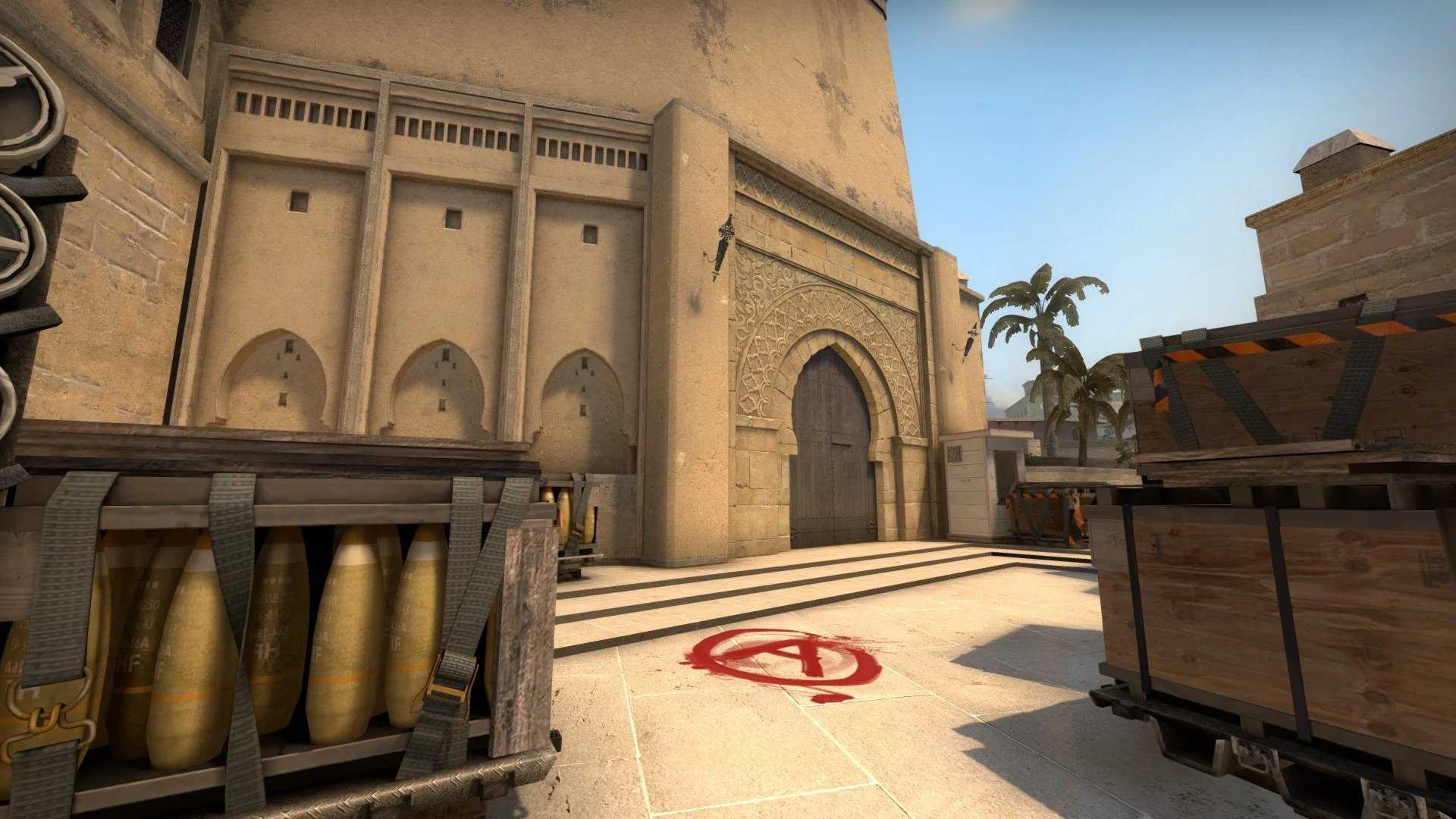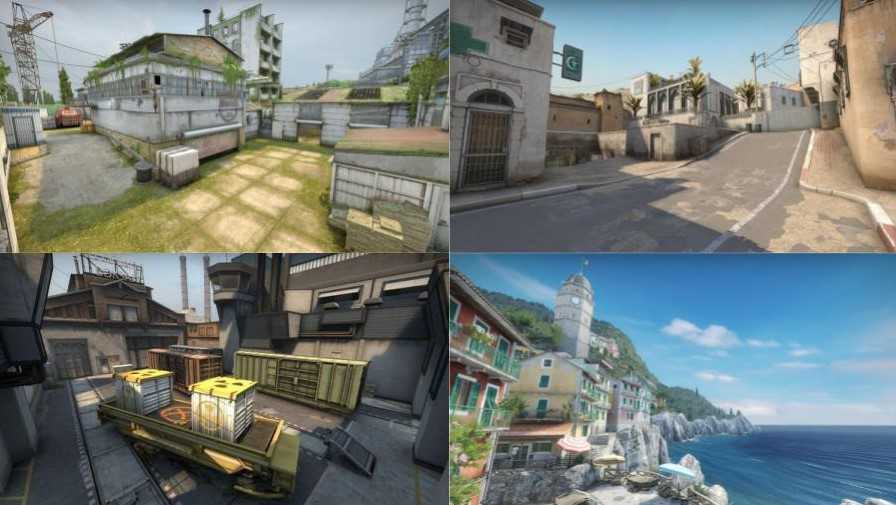Maps are the lifeblood of Counter-Strike. For a game whose core mechanics have been almost unchanged for well over two decades, the thing that keeps Counter-Strike fresh and engaging is the ever-changing map pool. While other games are often updated with new characters, abilities, and meta-shifting changes to the game, Counter-Strike is instead updated through the set of maps that people play on. Some of these maps are decades-old classics and some have come into the spotlight just recently, but they come together to create what is known as the map pool.
What is the Map Pool?
The map pool is the set of maps that are playable in Counter-Strike matchmaking and it is divided into two parts: Active Duty and Reserve.
The Active Duty maps are those that are playable in professional CSGO tournaments and the set of maps in the Active Duty pool is determined by Valve. There have been a total of eleven maps in the Active Duty pool over the years with only seven in the pool at a time. After the change in late 2022 brought in Anubis for Dust II, the Active Duty pool consists of Ancient, Anubis, Inferno, Mirage, Nuke, Overpass, and Vertigo.
While the Active Duty map pool is technically only for pros, it still affects the casual scene because higher-level players overlap with pros and both will only want to play the maps that are currently relevant to the esports scene. The changes in this map pool can signify large shifts in the state of CSGO as iconic maps that were once in the pool like Cache and Cobblestone can fade in popularity just because they are removed from pro play.
The Reserve maps are available for casual players to use in matchmaking but are not in professional tournaments. These are generally maps that were previously in the Active Duty pool but have since been removed and now sit in reserve. There are currently four maps in the reserve pool: Cache, Dust II, Train, and Tuscan.
To recap, professional CSGO matches can only be played on Active Duty maps, while casual players have access to both Active Duty and Reserve. Let’s go over all of the current Dctive Duty maps and then briefly touch on the reserves.
Ancient - Active Duty
The second newest map to be added to the Active Duty pool was created by Valve and put into the game for Operation Broken Fang back in December 2020. It would go on to replace Train in the Active Duty pool when the operation ended in May 2021.
The map is relatively balanced after a recent update compared to its previous form which was very CT-sided. Now the map revolves around early control of Mid as the new timings have both sides arrive there simultaneously. Both sites have small areas of entry on the wings of the map, meaning Mid is essential because splits and fast rotations are common.
Ancient is aesthetically unique and the layout forces both sides to have strong communication and teamwork to effectively take space and pick off the opposition.
Anubis - Active Duty
Anubis was first released in March 2020 after Operation Shattered Web and two years later it was added to the Reserve pool as a part of the 10th anniversary of CSGO. Shortly after in August 2022, it was added to the Active Duty pool, replacing Dust II.
The map is the only one to be very T-sided as CTs are relegated to bomb sites early with Ts given control of most of the map. This makes executes essential and, though CTs can rotate through Mid, Ts can take that and split the map in half, making it extremely difficult to defend.
Anubis has a fresh design with canals running through the map and its T-sided nature makes it stand out among the CT-sidedness of most maps in recent memory.
Inferno - Active Duty
Carried over from CS 1.6 at the start of CSGO, Inferno is one of the most beloved Counter-Strike maps and though it was removed from Active Duty for a short period several years ago, it has never left the game entirely.
Though Ts have a slight edge on average, the map is very well-balanced and offers plenty of options for both sides. The B entrance of Banana is crucial in the early round as it serves as the sole entrance to the B site other than the CT-Spawn. The map allows for a mix of aggression and restraint, but sites are difficult to retake when lost which makes economic awareness vital.
Inferno is a staple of the professional and casual scenes alike for its versatility and well-known design that has kept Counter-Strike fans coming back for years.
Mirage - Active Duty
The most popular Counter-Strike map of all time and the only map to never leave the Active Duty pool, Mirage is arguably the map that has defined Counter-Strike for a decade as it has sat in the pool undisturbed since June 2013.
Mirage is CT-sided, though not to an egregious degree as it is one of the most flexible maps for Ts to play on. Every area of the map is important and a strong default is crucial for Ts to be successful. Working different areas of the map allows control to be taken and the CTs need to be vigilant as everything is possible from fast executives to slow splits.
Mirage will always be the go-to map for people first learning the game as well as those who have played since the beginning and there is simply nothing else like it.
Nuke - Active Duty
Introduced to Counter-Strike 24 years ago in 1999 as a part of the fourth beta, Nuke is the oldest defusal map in the franchise. Throughout the years, it has evolved significantly for both balance and visuals, but the unconventional design at the map’s core has remained for over two decades.
Nuke is the most tactically complex map in Counter-Strike as its design is so unique. Both bombsites sit on top of each other and the map has all ranges from extremely long outside to close corners in the depths of B site. The rotates are fast, utility is essential, and while it is significantly CT-sided, there are more options to out-maneuver the opponent here than anywhere else.
Nuke is the oldest defusal map in Counter-Strike and has had over two decades to be shaped into the pinnacle of strategy and competition that it is today. It’s a small map but packed with more possibilities than any other.
Overpass - Active Duty
Created by Valve in December 2013 in the Winter Offensive update, Overpass was the first new defusal map made for CSGO. It has undergone many updates in layout, especially on the A site, but is now one of the most popular casual maps and has not left the Active Duty pool since its introduction almost 10 years ago.
Overpass is very CT-sided and is the largest map in the game. While it has some close-range fights, especially in the connector, many medium and long-range fights are common and require a strong knowledge of what angles are usually held. Good utility is essential and both sides must be well coordinated in able to succeed.
Though some find its CT-sided nature tiring, the balance of aim and strategy necessary to master Overpass has made it a mainstay for both casual and professional players alike
Vertigo - Active Duty
Released alongside CS 1.1 in 2001, Vertigo was long forgotten until it was remade and released into the Active Duty pool in March 2019, a full 18 years after it was created. It replaced Cache and the initial reception was mixed. Though the map has undergone changes that have warmed popular opinion, it remains polarizing among fans.
Likely the most balanced map in the game, Vertigo has two levels that make fast rotations audible to the enemy as a counter for how quickly Ts on the lower level can go from one site to the other. Control of A Ramp is essential as it is the most contested point on the map and B site can be difficult to take consistently. Smokes and mollies can make for chaotic situations as they are necessary for taking sites and information gathering is crucial for making fast decisions as a team.
Vertigo is not the most loved Counter-Strike map, but it is a joy to play after learning about the core principles of information, utility, and rotations.
Cache, Dust II, Train, Tuscan - Reserve
The current reserve pool is full of some classic and iconic Counter-Strike maps that, while not used by professionals, are still a joy to play as a casual player.
One of the prime examples of a classic CSGO map, Cache is a sad story in the game’s history. It was a community map put into the Active Duty pool in September 2013 where it remained for six years until it was reworked and removed for Vertigo in 2019. It was a fan-favorite map for many years, but many feel the map, unfortunately, lost its magic after it was reworked.
Dust II is among the most well-known maps in gaming history for its four-square design that was revolutionary at its inception back in 2001. In the 22 years following that, it hasn’t changed much and has thus become a bit stale and predictable as it has been played so many times. It was added to the Active Duty pool at CSGO’s launch and removed five years later to be reworked in 2017 before being added back to the pool in 2018. Months ago in November 2022, it was removed again to make way for Anubis.
Train is another map from the original Counter-Strike that has housed many great matches over the years despite its CT-sided and execute-heavy nature. It was one of the original five maps added at the start of CSGO but was removed and reworked in 2014 as new maps were added. It returned to the Active Duty pool in 2015 and stayed there until May 2021 when Ancient took its place.
Tuscan is the only map in the Reserve pool that has never actually been in the Active Duty pool. It was a classic of the original Counter-Strike but was never properly transferred to Global Offensive until the game’s 10th birthday when it was introduced alongside Anubis. Tuscan is the most likely map in the Reserve pool to enter Active Duty someday and its potential is yet to be realized.
Timeline of the Active Duty Pool
Credit: https://liquipedia.net/counterstrike/Portal:Maps
Conclusion
If the foundation of Counter-Strike is its mechanics, the thing that sits atop it is the maps. Both the pool of maps in the game and the maps themselves are constantly evolving as the game grows with each map taking years, sometimes decades of work to become what it is today. Learning about each map in the Active Duty and Reserve pools strengthens your understanding of the game and gives you more tools to have fun playing it because, in Counter-Strike, knowledge is king. With this in mind, go forth, give yourself the edge in your next game, and pick a map to dive into. I can assure you, there is no wrong choice.








